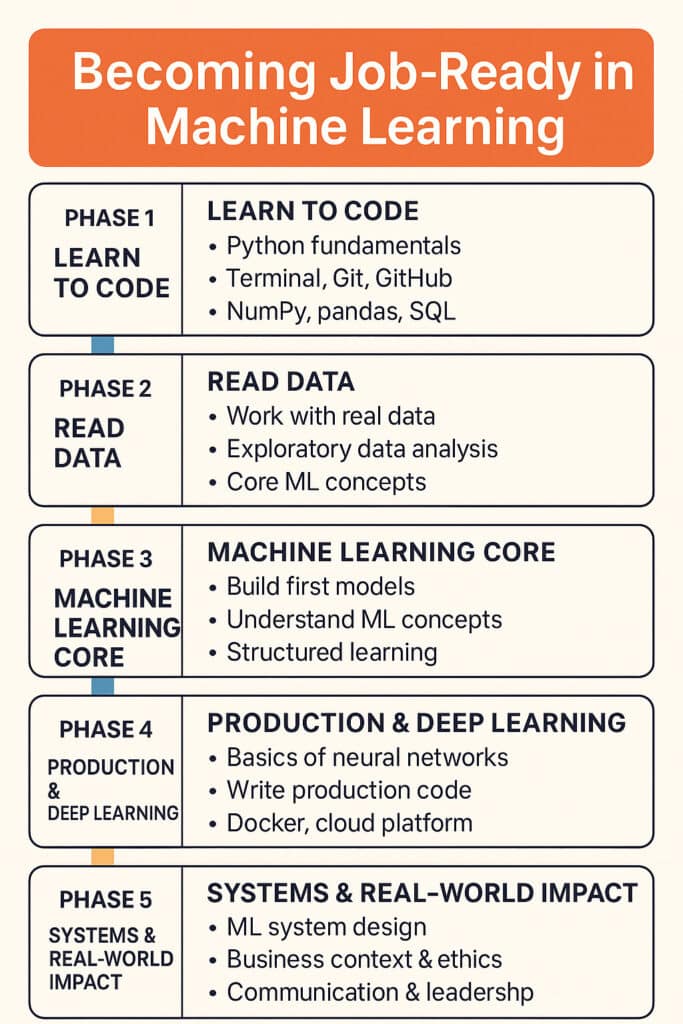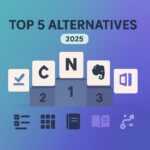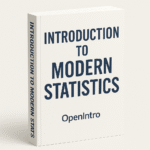A Smarter Way to Learn Machine Learning: Projects That Actually Matter – From Beginner to Hired
769
Description

A Smarter Way to Learn Machine Learning: Projects That Actually Matter – From Beginner to Hired
- A Smarter Way to Learn Machine Learning: Projects That Actually Matter – From Beginner to Hired
- Phase 1 – Core Foundations: Learn the Stuff That’ll Keep You Employed
- Phase 2 – Learn to Read Data Like a Detective (Not a Tourist)
- Phase 3 – Real Machine Learning (Without the Math Migraine)
- Phase 4 – From Models to Machines: Deep Learning & Real-World Deployment
- Skill #9: Understand Neural Networks (Without Getting Lost in Layers)
- Skill #10: Write Code Like a Software Engineer
- Skill #11: Data Structures & Algorithms (For Interviews Only)
- Skill #12: Learn Docker (AKA "Make it Work Everywhere")
- Skill #13: Understand the Cloud (Pick One Platform)
- What You Can Apply For After This Phase:
- Phase 5 – Senior Thinking, System Design & Real-World Impact:
- Final Takeaways
- Your Next Move
Phase 1 – Core Foundations: Learn the Stuff That’ll Keep You Employed
“Before I ever trained a model, I had to train myself — to sit down, write clean code, and not cry when I opened Git.”
This phase equips you with practical skills, not just theoretical knowledge, that you’ll use every day in an ML job or project.
Skill #1: Learn to Code (Start with Python)
Why?
Machine Learning = Algorithms + code.
If you hate writing code, ML may not be your playground, but you need to find out early on.
What to Learn:
- Variables and Data Types
- If/Else, Loops
- Functions & Imports
- Basic error handling
- Play with Jupyter Notebooks
Fork Point: What if I already know some Python?
If you’ve done 100 Days of Python or built some scripts before:
- ✅ Fast-forward to working with real datasets (Pandas + JSON)
- ❌ Don’t obsess over OOP or decorator syntax yet
⚠️ Trap to Avoid:
Spending 3 weeks toggling between 10 Python tutorials and not writing a single line of your own code.
Fix: Use a “learn & do” combo. For example, watch a lesson → build something simple → push to GitHub.
✍️ Your Challenge:
- Build a basic BMI calculator script
- Add it to GitHub with a README.md
- Try converting it into a web form using Gradio
🔹 Skill #2: Use the Terminal Like an Adult
You don’t need to look like a hacker, but you should be able to:
- Navigate directories
- Move, copy, and delete files
- Create virtual environments
- Run Python scripts from the terminal
⚠️ Trap:
Relying on your IDE to do everything for you.
You’ll eventually deploy models or use cloud systems — the terminal is your key to those worlds.
✍️ Challenge:
- Open a terminal and create a folder named ml-roadmap
- Inside it, create a virtual environment and install pandas
🔹 Skill #3: Git & GitHub (Even if You’re Just Pushing Junk)
Don’t wait until your project is “perfect.” Push junk early. Why?
- Version control teaches you discipline
- GitHub = your digital CV
- You’ll need it for job interviews and team collaboration
💡 Pro Tip:
Create a GitHub repo called 100DaysOfMLCode and use it to log everything you try — even failed projects.
❓Fork Point: “Should I learn Git before GitHub?”
Nope. Just use GitHub Desktop if you’re visual — and graduate to the terminal later.
✍️ Challenge:
- Create a GitHub repo called first-python-project
- Push your BMI calculator there
- Add a commit message that’s not “update final FINAL version 😩”
🧠 What You Can Apply For After This Phase:
You’re now skilled enough to:
- Apply for Data Entry or Junior Python Internships
- Start contributing to open-source beginner ML repos
- Begin Kaggle playground competitions
- Offer help in community projects (like cleaning CSVs or automating scripts)
This is your “core muscle” phase. Not glamorous, but without it, everything collapses later.
Phase 2 – Learn to Read Data Like a Detective (Not a Tourist)
“At some point, you’ll download a beautiful dataset… and realise it’s trash. Welcome to the real world.”
Now that you can code, it’s time to interact with data, not just print “Hello World” forever. This phase teaches you how to load, clean, explore, and understand the data that fuels machine learning.
Skill #4: Work With Real Data (Pandas + Friends)
Your toolkit:
- NumPy – for fast matrix operations
- Pandas – for handling Excel/CSV-like tables
- JSON, Parquet – common real-world formats
- Basic SQL – because 70% of jobs still require querying databases
💡 Hot Tip:
Practice by scraping small datasets from:
- Kaggle Datasets
- Datahub.io
- OpenML
❓Fork Point: Should I learn databases now?
- If you’re aiming for a Data Analyst role, → Yes, do SQL early.
- If you’re headed toward model building, → Learn just enough to SELECT and JOIN.
⚠️ Trap:
Cleaning your data manually in Excel.
Nope. You’re here to be a machine learning engineer, not a spreadsheet wizard.
✍️ Challenge:
- Load a CSV with Pandas
- Clean missing values
- Export the cleaned file to a new CSV
- Commit this pipeline to GitHub
Skill #5: Exploratory Data Analysis (EDA)
EDA = Data mood check.
Before you build any model, explore your data like a crime scene:
- What’s missing?
- What’s weird?
- What’s correlated?
- Who’s lying to you?
Your EDA checklist:
- .describe(), .info() in Pandas
- Plot histograms, boxplots, and bar charts
- Use Seaborn or Plotly (but don’t fall into plotting hell)
⚠️ Trap:
Spending 2 hours making beautiful pie charts… for categorical data that no one cares about.
Keep it simple. Visualise to find problems, not to impress Dribbble.
✍️ Challenge:
- Grab a dataset from Kaggle
- Run .info() and .isnull().sum()
- Visualise at least 2 numeric and 2 categorical variables
- Drop 3 insights as markdown notes in your GitHub repo
❓Fork Point: “Should I learn Seaborn or Matplotlib?”
Pick one and move on. They overlap.
- Visual learner? Use Plotly
- Command-line comfort? Use Seaborn
- You can switch later — they’re just tools.
🧠 What You Can Apply For After This Phase:
You’re ready to:
- Take on freelance or entry gigs involving data cleaning
- Start making notebook-based portfolio projects
- Contribute to ML competitions and explain your EDA clearly
- Apply for Junior Data Analyst internships or bootcamp interviews
Phase 3 – Real Machine Learning (Without the Math Migraine)
“You don’t need to derive the chain rule by hand before building your first model. Promise.”
As you step into the world of ML, you won’t be overwhelmed by math. Instead, you’ll start with intuition, experiments, and small wins. This practical approach is designed to build your confidence and reassure you that you’re on the right track.
Skill #6: Build a Model Before You Understand Everything
We’re flipping the script:
- Don’t start with formulas
- Start with results
- Get that dopamine hit when your first model predicts something correctly
Your First Models:
- Linear Regression (predict numbers)
- KNN (classify things)
- Decision Trees (easy to visualize)
Use Scikit-learn — the plug-and-play library of dreams.
Fork Point: “Should I watch theory videos or jump into code?”
Do both, but with a twist:
- 70% = doing (small projects)
- 30% = understanding (why your model worked)
Watch 1 video → Build 1 thing. Repeat.
⚠️ Trap:
Waiting until you’re “ready” before trying Kaggle.
You’ll never feel ready. Jump in. You’ll learn more from 1 competition than 10 hours of tutorials.
✍️ Challenge:
- Download a basic dataset (like Titanic or Iris)
- Do light EDA
- Fit a model with Scikit-learn
- Measure accuracy and explain the results in plain English
- Push notebook + README to GitHub
Skill #7: Understand Core ML Concepts (Without Drowning)
You’re not building AGI yet. Focus on:
- Train/Test split
- Classification vs Regression
- Supervised vs Unsupervised
- Accuracy, Precision, Recall, F1
- Overfitting & the Bias-Variance tradeoff
💡 Mini-Mindshift:
“Don’t ask ‘how does this algorithm work?’
Ask: ‘when should I use this algorithm?’”
That’s the real industry question.
✍️ Challenge:
- Explain in your own words:
- What is overfitting?
- When would you prefer precision over recall?
- Bonus: Add to your GitHub repo as ml-concepts.md
🔹 Skill #8: Structured Learning (Don’t Get Lost)
You could patch YouTube videos and blog posts forever, or follow a structured track like:
- DataCamp: Machine Learning Scientist in Python
- Coursera: Andrew Ng’s ML Specialisation
- Kaggle Learn
❓Fork Point: “Do I need a paid platform?”
Not necessarily, but paid tracks give structure, projects, and certificates.
Free, but you’ll need discipline.
🧠 What You Can Apply For After This Phase:
You’re now:
- Eligible for ML Intern roles
- Able to build portfolio projects
- Ready to start a blog or YouTube series explaining basic ML
- Confident enough to do simple client ML tasks (like churn prediction)
Phase 3 is where many people quit, because they jump too hard into theory.
But if you treat models like tools, not math puzzles, you’ll move faster and have more fun.
Phase 4 – From Models to Machines: Deep Learning & Real-World Deployment
“You’ve built cool models. Now, can you deploy them without breaking the internet?”
This phase turns you from a project builder into a machine learning engineer — someone who doesn’t just make models, but makes them work in the real world. You’ll also dip your toes into deep learning (finally).
Skill #9: Understand Neural Networks (Without Getting Lost in Layers)
Neural networks are basically fancy stacked math functions with weights.
You don’t need to master every paper — just get the basics:
- Forward & Backwards Propagation
- Activation Functions (ReLU, Sigmoid)
- Loss Functions
- CNNs vs RNNs vs Transformers (light intro)
💡 Quick Wins:
- Use PyTorch or TensorFlow to build a tiny image classifier (like MNIST)
- Try Keras if you want less setup and more “plug and train”
⚠️ Trap:
Getting stuck on theory-heavy videos with 0 code.
Instead: Start with one working neural network → then study what’s happening.
✍️ Challenge:
- Build a basic digit classifier with Keras
- Visualize predictions
- Push the notebook to GitHub with screenshots in the README
Skill #10: Write Code Like a Software Engineer
At this point, your Jupyter notebooks should retire from being the main show.
Time to learn:
- Object-Oriented Programming (OOP)
- Modular code structure (functions, classes)
- Unit testing (basic pytest)
- Clean code practices
❓Fork Point: “Is this overkill if I’m just doing data science?”
No, not if you want your models to scale, collaborate with engineers, or deploy anything beyond localhost.
✍️ Challenge:
- Refactor one ML project from a messy notebook into:
- A main.py
- A utils.py with helper functions
- A simple test file with pytest
Skill #11: Data Structures & Algorithms (For Interviews Only)
You’re not solving graph theory problems in production, but you will face them in tech interviews.
Focus on:
- Lists, Dictionaries, Sets
- Trees, Hash Tables
- Sorting, Searching
- Big O Notation basics
💡 Best practice platforms:
⚠️ Trap:
Thinking you need to master DSA to succeed in ML jobs.
Not true. Do just enough to survive interviews — then get back to building.
✍️ Challenge:
- Solve 5 beginner problems on LeetCode
- Push your solutions as .py files to GitHub under DSA-Practice
Skill #12: Learn Docker (AKA “Make it Work Everywhere”)
Models that run fine on your laptop might break in production.
Docker fixes that.
Learn to:
- Write a Dockerfile
- Package your model + environment
- Build + run containers
- Expose a basic API (e.g. Flask or FastAPI)
❓Fork Point: “Do I need Kubernetes now?”
Nope. Learn it only if your job requires scaling deployments.
For now, Docker is king.
✍️ Challenge:
- Build a toy sentiment analysis model
- Wrap it in a Flask API
- Dockerize it and run locally
Skill #13: Understand the Cloud (Pick One Platform)
You don’t need to be a cloud expert — just cloud literate.
Choose one:
- AWS (most common)
- GCP (best for ML)
- Azure (common in enterprise)
Learn:
- Storage (S3, Cloud Storage)
- Compute (EC2, Lambda)
- Model Hosting (SageMaker, Vertex AI)
💡 Pro Tip:
Use free tier accounts to test deployments without going broke.
What You Can Apply For After This Phase:
You’re now eligible for:
- MLE internships
- Roles involving model deployment or API dev
- Building SaaS tools with ML behind the scenes
- Contributing to open-source production ML projects
Phase 4 is the difference between a portfolio builder and a job-getter. People who understand code, containers, and deployment actually get hired.
Phase 5 – Senior Thinking, System Design & Real-World Impact:
The Essential Transition “Want to think like a senior ML engineer on day one? It’s not about more code—it’s about systems, relationships, and real outcomes.”
In this final phase, you level up from simply building ML systems to crafting systems people actually use, while influencing team culture & business success.
Skill #14: Architect Real ML Systems
You’ve built models—now build systems that last:
- Design data pipelines with ingestion, transformation, and feature stores.
- Understand batch vs. online inference strategies.
- Optimise for latency, reliability, and scale.
- Build signals for cost & tradeoff awareness.
Skill #15: AI Engineering & Tooling
Expand your toolbelt:
- Learn to integrate via APIs, RAG pipelines, and microservices.
- Master experiment tracking: MLflow, Weights & Biases.
- Monitor for data drift, build alerts, and set retraining triggers.
Skill #16: Business Context & Ethics
Every decision has consequences for your models and your company:
- Understand how ML impacts business metrics (ROI, retention, cost).
- Learn about compliance, bias, privacy, and fairness.
- Choose a model complexity aligned with real-world constraints.
Skill #17: Communication & Leadership
No one gets far in ML without clarity and presence:
- Translate complex pipelines into simple narratives.
- Practice in public: write blog posts, present at meetups, teach others.
- Seek feedback—and give it.
Unpopular—but Proven Trick: Prototype in Public + Embrace Vulnerability
This is the secret weapon of fast-trackers like Surabhi Bhargava (Adobe/Big Tech lead) Business Insider
- Prototype fast: Build demos and show them early.
- Be vulnerable: Share uncertainties and ask for help.
- The result? You gain visibility, buy-in, and powerful allies across your organisation.
Quick wins = trust. Open questions = collaboration.
This combo is often more effective than perfect code hidden in a repo.
Skill #18: Mentorship & Networking
Follow in the footsteps of Sameer Samat, who cold-emailed Sergey Brin in ’99—and got mentorship that drove his leadership journey, Business Insider:
- Find senior mentors—even casually via LinkedIn or email.
- Share your work, ask smart questions.
- Offer your help in return.
This stuff is seldom taught, but it makes gravity-defying career moves.
Phase 5 Challenge: Show the World You’re a Senior
- Design: Sketch an end-to-end ML system (db ingestion → API).
- Prototype: Build a small version, post on GitHub or demo at a meetup.
- Ask: Share with a mentor or peer and ask, “Here’s where I think this fails—what do you say?”
- Share: Write a 1-page blog post summarising your system and lessons learned.
Final Takeaways
- ✅ Phases 1–4 teach you how.
- Phase 5 teaches you why, when, and who reaches the top.
- The unpopular moves—public prototyping, openness, leveraging mentorship—are what make the difference between good and unforgettable.
Your Next Move
Take a moment and ask yourself:
What prototype or concept can I share publicly this week?
It doesn’t have to be perfect—just early. Because early visibility + authentic humility = trust + impact.
That’s how senior ML engineers don’t just work — they lead
Download links
📘 Course: How to Download and Start
Learning
You're on the right page! Follow these steps to get started:
✅ Steps:
- Click the Download Button
Tap the “Download” button below to get the course files.
- Save the Files
Choose a folder on your device where you can easily find the files.
- Extract the Files (if zipped)
If it’s a ZIP file, right-click and select “Extract” to open it.
- Open the Materials
Use a PDF reader or video player to access the course content.
- Start Learning
Go through the materials at your own pace and enjoy the course!
Need Help?
Contact us at [agbajeflows@gmail.com]







![[2025] Microsoft Azure, Power BI, Security Certification Udemy Courses Free with Coupon – Limited-Time Access](https://coursejoint.com/wp-content/uploads/2025/07/2025-Microsoft-Azure-Power-BI-Security-Certification-Udemy-Courses-Free-with-Coupon-–-Limited-Time-Access-75x75.png)

![🎓 Top Free Premium Udemy Courses with Verified Coupons – Level Up in Tech, AI, DevOps & More [ June 2025 ]](https://coursejoint.com/wp-content/uploads/2025/06/🎓-Top-Free-Premium-Udemy-Courses-with-Verified-Coupons-–-Level-Up-in-Tech-AI-DevOps-More-June-2025--75x75.jpg)
